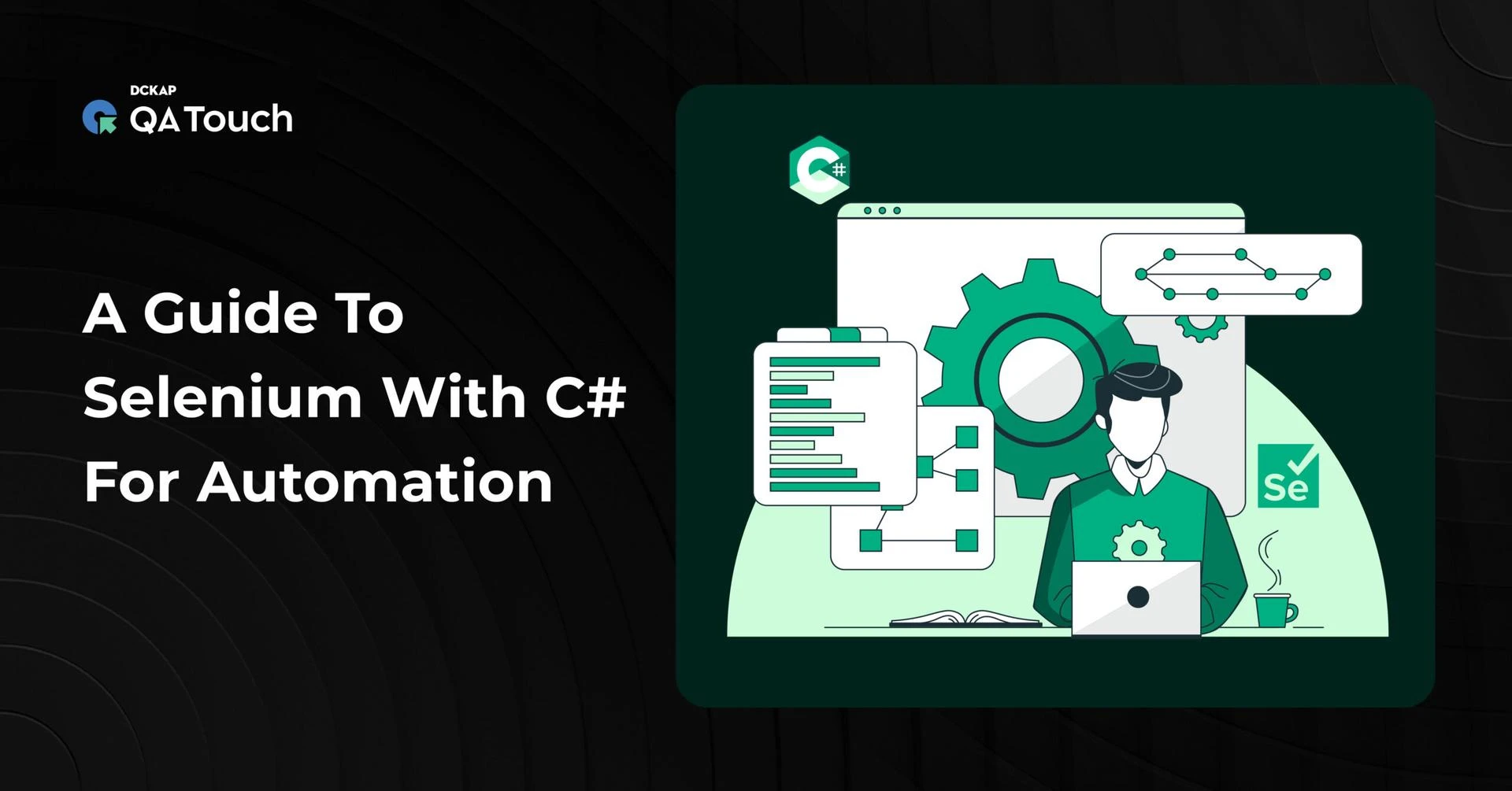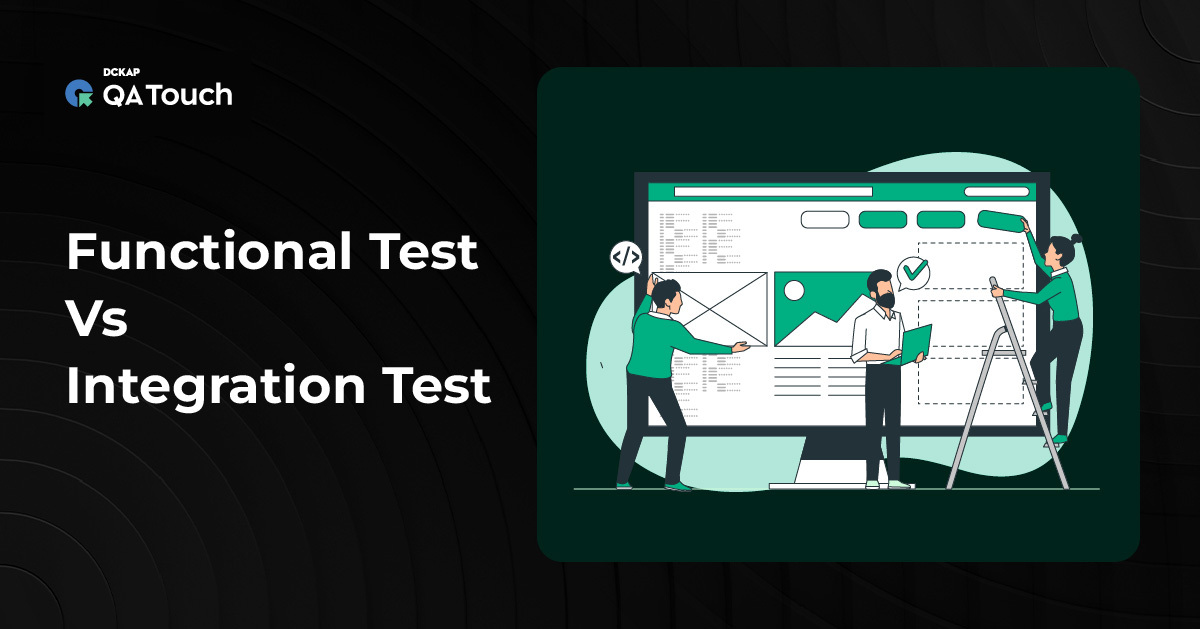In software development, non-functional testing plays a crucial role in ensuring that applications function efficiently under various conditions. Among these, performance testing and load testing are often confused but serve distinct purposes. Performance testing evaluates overall system efficiency, while load testing specifically examines system behaviour under predefined user loads. In this blog, we will explore their differences, use cases, and best practices.
What is Performance Testing?
 Performance testing is a crucial process in software development that evaluates how well a system performs under different conditions. It goes beyond simply checking if an application works, it assesses how efficiently it responds to user interactions, handles varying loads, and sustains performance over time.
Performance testing is a crucial process in software development that evaluates how well a system performs under different conditions. It goes beyond simply checking if an application works, it assesses how efficiently it responds to user interactions, handles varying loads, and sustains performance over time.
Key aspects of performance testing include:
- Measuring Response Time and Throughput: How quickly does the system respond to user requests? Can it handle multiple users simultaneously without lag?
- Resource Utilization: Monitoring CPU, memory, and network usage to ensure optimal performance without overloading system resources.
- Identifying Bottlenecks: Detecting and resolving slowdowns that could affect the user experience, such as inefficient database queries or server limitations.
- Testing Under Different Conditions: Simulating various scenarios, from normal usage to peak traffic, to ensure stability and scalability.
Types of Performance Testing

Performance testing isn’t a one-size-fits-all process. Different testing methods help evaluate various aspects of a system’s performance, ensuring it functions optimally under different conditions. Here are some key types:
- Load Testing: This assesses how the system performs under expected and peak user loads. It helps determine response times, resource usage, and overall efficiency during typical operations.
- Stress Testing: By pushing the system beyond its normal limits, stress testing evaluates how well it can handle extreme conditions and recover from potential failures.
- Soak Testing (Endurance Testing): Running the system under a sustained load over an extended period helps identify memory leaks, resource depletion, and performance degradation over time.
- Spike Testing: This type of test simulates sudden and extreme increases in traffic to see how the system reacts and whether it can handle abrupt demand surges.
- Scalability Testing: As demand grows, a system should be able to scale accordingly. Scalability testing measures how well the application adapts to increasing workloads by adjusting resources.
- Volume Testing: When dealing with massive amounts of data, volume testing ensures that the system can efficiently process and manage large datasets without performance issues.
When to Perform Performance Testing?
Performance testing is not just a final checkbox before launching a product. It’s a continuous process that ensures an application runs smoothly under different conditions. Here are some key moments when performance testing is essential:
- Before Releasing a Product: It’s crucial to verify that an application meets speed, responsiveness, and efficiency benchmarks before making it available to users. No one wants a slow or laggy experience.
- After Major Code Changes or Updates: Significant updates, like introducing new features or restructuring the architecture, can impact performance. Testing helps catch any unexpected slowdowns or inefficiencies early.
- When Preparing for Scalability: If an application is expected to handle more users or data in the future, performance testing helps ensure it can scale effectively without crashing or slowing down.
- Before Production Deployment: Running tests in a staging environment before going live can reveal potential bottlenecks, allowing developers to fine-tune the system for a smoother rollout.
What is Load Testing?
 Load testing is a type of performance testing that helps you understand how your system handles real-world usage. It measures how your application performs under a predefined number of users or requests, ensuring it can handle expected demand without issues.
Load testing is a type of performance testing that helps you understand how your system handles real-world usage. It measures how your application performs under a predefined number of users or requests, ensuring it can handle expected demand without issues.
Key aspects of load testing include:
- Simulating Real-World Traffic: By gradually increasing the number of concurrent users or requests, you can see how the system behaves under normal and peak conditions.
- Measuring System Capacity: Load testing helps determine how much traffic your system can handle before performance starts to decline or failures occur.
- Identifying Performance Limits: By pushing the system to its limits, you can pinpoint the exact thresholds where response times slow down, errors increase, or crashes happen.
Types of Load Testing

Load testing isn’t just a one-size-fits-all approach- it can be tailored to assess specific performance aspects based on how the load is applied. Here are some key types of load testing:
-
- Normal Load Testing: This tests how the system performs under typical, expected load conditions. It helps you confirm that the system can handle regular usage without any issues.
- Peak Load Testing: This type of test measures how your system handles short-term maximum user loads, simulating extreme but realistic conditions like holiday traffic spikes.
- Soak Load Testing: Soak testing involves running tests over an extended period of time, ensuring the system can sustain a continuous load without performance degradation or failures.
- Concurrent Load Testing: By simulating multiple concurrent users, this test evaluates how well the system manages shared resources and measures response time when many users interact with the application at once.
- Distributed Load Testing: This test applies load from multiple geographic locations or machines to assess how the system performs under distributed traffic, especially in terms of network performance and latency.
- Capacity Testing: This test determines the maximum amount of load a system can handle before performance degrades or the system fails. It helps establish system limits and provides insights into scalability, ensuring that infrastructure and resources can be adjusted to meet future demand.
When to Perform Load Testing?
Load testing is essential in several key scenarios to ensure your system can handle real-world usage and high traffic demands. Here’s when you should conduct load testing:
- Before Launching a High-Traffic Website or Application: If you’re about to release a site or app that expects a lot of visitors, load testing helps ensure it can handle the traffic without crashing or slowing down.
- When Preparing for Sales Events or Product Launches: Big events like Black Friday sales or product launches can cause a surge in traffic. Load testing beforehand ensures your system is ready for these spikes.
- After Infrastructure or Server Upgrades: If you’ve made improvements to your infrastructure or upgraded servers, load testing can confirm that these changes enhance system performance as expected.
- When Ensuring Third-Party Integrations Can Handle High Demand: If your system relies on third-party services like APIs or payment gateways, load testing ensures they can perform well under high traffic or transaction volumes.
Performance Testing Vs Load Testing
While performance testing and load testing both aim to ensure a system operates efficiently, they focus on different aspects and are applied in different contexts. Let’s take a closer look at each, comparing them across several key factors:
| Factor | Performance Testing | Load Testing |
| Purpose | To assess how a system performs under various conditions and loads | To measure how a system performs under a predefined user load |
| Scope | Broader scope, including tests for response time, throughput, resource usage, and system stability | Focused on evaluating the system’s behavior under expected or peak user loads |
| Metrics Analyzed | Response time, throughput, resource utilization, stability, scalability, and bottlenecks | Response time, throughput, and system capacity under load |
| Use Cases | Performance tuning, optimization, scalability planning, and identifying bottlenecks | Validating system capacity, simulating real-world traffic, and handling peak loads |
Example of Performance Testing and Load Testing
To better understand the difference between performance testing and load testing, let’s look at two real-world examples:
Performance Testing Example
Imagine you’re developing a mobile app for an online marketplace that allows users to browse products, make purchases, and interact with others. As part of performance testing, you might:
- Test response times for different actions (e.g., searching for a product, viewing a product page, completing a checkout process) to ensure the app is fast and responsive under normal usage.
- Evaluate resource utilization by tracking memory, CPU usage, and battery consumption to ensure the app doesn’t drain users’ devices quickly.
- Run stress tests to see how the app behaves when it’s subjected to high volumes of data (e.g., loading thousands of product images) or heavy user activity (e.g., multiple users trying to make purchases at once). This would help you identify any bottlenecks and optimize the app to handle such conditions.
- Analyze long-term stability by running the app over extended periods, and checking for memory leaks or crashes.
Load Testing Example
Let’s say your team is preparing for a major sale event where you expect thousands of users to visit your e-commerce site simultaneously. In this case, load testing would be used to:
- Simulate user traffic to determine how many users the site can handle at the same time without crashing or slowing down. For example, you might simulate 5,000, 10,000, or even 50,000 users making purchases, searching for products, and checking out.
- Measure the system’s performance by tracking response times and throughput as the number of concurrent users increases. This helps determine the site’s capacity and pinpoint any performance degradation points as the load reaches peak levels.
- Identify thresholds where the system starts to show signs of stress—such as slower response times, errors, or even crashes—so you can optimize the website before the event.
Advantages and Disadvantages of Performance Testing
Advantages
- Improves User Experience by Ensuring Fast Load Times: Performance testing helps ensure that applications load quickly and perform smoothly under various conditions, which leads to better user satisfaction and engagement. Fast response times are crucial for keeping users happy and reducing bounce rates.
- Helps in Optimizing System Resources and Cost Efficiency: By identifying inefficiencies and bottlenecks, performance testing allows teams to optimize resource utilization, which can reduce infrastructure costs and prevent resource wastage. Optimized systems use less CPU, memory, and network bandwidth, leading to cost savings.
- Identifies Performance Bottlenecks Before Deployment: Performance testing helps uncover potential issues, such as slow database queries, overloaded servers, or inefficient code, before the system is launched. This proactive approach allows teams to resolve problems early, ensuring a smoother user experience when the system goes live.
Disadvantages
- Requires Specialized Tools and Expertise: Performance testing often requires specialized software tools (e.g., JMeter, LoadRunner) and expertise to design, execute, and interpret tests. It can be challenging for teams without the necessary skills or resources to perform comprehensive testing.
- Can Be Time-Consuming and Resource-Intensive: Setting up and executing performance tests, particularly with large or complex systems, can take considerable time and computational resources. Tests might need to be run multiple times with varying parameters, making the process lengthy and costly.
- Results Can Be Affected by Fluctuating Test Environment: The results of performance testing can be influenced by factors outside your control, such as network issues, hardware limitations, or varying test conditions. This can make it difficult to reproduce results consistently, potentially leading to inaccurate conclusions.
Advantages and Disadvantages of Load Testing
Advantages
- Ensures System Reliability Under Real-World Traffic Conditions: Load testing simulates actual user traffic, helping you see how the system performs under expected conditions. It gives you confidence that the system will remain stable and responsive when real users start interacting with it.
- Helps Prevent Crashes and Downtime During Peak Loads: By testing how your system handles high traffic, load testing can help you identify weaknesses that could cause crashes or slowdowns during periods of peak demand. This is critical to ensuring uptime during major events or heavy usage.
- Identifies the Maximum Capacity of an Application: Load testing helps you determine the upper limit of what the system can handle in terms of traffic volume. Knowing the maximum capacity allows you to plan for scalability and optimize the system to handle more users in the future.
Disadvantages
- Requires a Dedicated Test Environment for Accurate Results: To ensure accurate and reliable results, load testing should be done in an isolated, controlled environment that mimics real-world conditions. This often means setting up separate infrastructure, which can be costly and time-consuming.
- Can Be Expensive Due to Infrastructure and Tool Requirements: Conducting comprehensive load testing typically requires specialized tools and infrastructure, especially if you’re testing for high volumes of users. The cost of these resources, including hardware and software, can add up quickly.
- May Not Always Replicate Real-World User Behavior Accurately: Load testing primarily focuses on traffic volume and response time, but it doesn’t always account for the nuances of real user behavior, such as how users interact with your system in unpredictable ways. This means some results may not fully reflect actual user experiences during peak usage.
Common Challenges in Performance and Load Testing
While performance and load testing are essential for ensuring a system’s stability and efficiency, there are common challenges teams face during these tests. Understanding these challenges and knowing how to address them will help improve the effectiveness of your testing process.
1. Inaccurate Test Scenarios
One of the most common challenges in both performance and load testing is ensuring that the test scenarios accurately simulate real-world user behavior. Often, tests rely on predefined scenarios, which may not represent the unpredictable or varied ways real users interact with the system.
How to Overcome
- Develop diverse and realistic test scripts that replicate actual user interactions, including different user flows, session durations, and actions.
- Incorporate randomization into test scenarios to mimic the unpredictable nature of real users.
- Consider using real user analytics or heatmaps to guide the creation of more realistic test cases.
2. Environment Discrepancies
Testing in environments that are not closely aligned with the production environment can lead to discrepancies in performance results. Factors such as network latency, server configurations, and hardware can affect how tests perform, leading to inaccurate results.
How to Overcome
- Set up a dedicated test environment that mirrors the production environment as closely as possible, including server configurations, network setups, and even user traffic patterns.
- Use cloud-based environments that can be scaled on-demand to simulate real-world traffic and load conditions more effectively.
- Regularly update test environments to match production as closely as possible, particularly after infrastructure changes.
3. Interpreting Test Results
Another challenge is properly interpreting the results of performance and load tests. Key performance indicators (KPIs) like response time, throughput, and error rates can sometimes be difficult to analyze, and without context, it can be challenging to know whether performance is acceptable.
How to Overcome
- Set clear performance benchmarks based on user expectations, business requirements, and industry standards.
- Use automated analysis tools that can help track trends and highlight potential performance bottlenecks or issues.
- Collaborate with stakeholders (e.g., developers, and product managers) to contextualize the results and prioritize optimizations based on business goals.
4. Scalability Issues
Testing high-traffic applications, particularly those that need to scale, can be difficult. As the system grows, it becomes harder to simulate traffic spikes and ensure that the system will maintain optimal performance under stress.
How to Overcome
- Conduct scalability testing alongside load testing to evaluate how the system can handle growing demand over time.
- Utilize cloud platforms that provide flexible scaling options, allowing you to simulate large-scale traffic conditions.
- Implement horizontal scaling strategies (adding more servers) and vertical scaling strategies (increasing server resources) in your testing to identify the most efficient scaling solutions for your system.
Best Practices for Performance and Load Testing
To ensure that performance and load testing deliver reliable and actionable results, it’s essential to follow best practices throughout the testing process. These practices help to achieve more accurate insights, optimize system performance, and maintain a smooth user experience.
1. Use Realistic User Behavior
Simulating real-world usage patterns is crucial for obtaining meaningful test results. Often, tests can fail to predict issues if they’re based on overly simplistic or unrealistic scenarios. It’s essential to replicate the way real users will interact with the system.
How to Apply
- Design test scenarios that mimic actual user journeys, including various paths users may take (e.g., browsing, adding products to the cart, checking out).
- Incorporate real-world data (e.g., session durations, clicks, idle times) to make your tests more realistic.
- Use tools like user behavior analytics or heatmaps to guide the creation of these scenarios.
2. Monitor Server Metrics
While testing, it’s important to track underlying server metrics such as CPU, memory usage, disk I/O, and database performance. These insights provide a deeper understanding of how the system behaves under load and help identify performance bottlenecks.
How to Apply
- Continuously monitor metrics during testing using tools like New Relic, Grafana, or Datadog to assess the system’s resource usage.
- Pay attention to areas like CPU spikes, memory usage, and database query performance, as these can indicate bottlenecks or inefficiencies.
- Set thresholds for these metrics to trigger alerts when resource usage goes beyond acceptable limits, helping you quickly address performance issues.
3. Optimize Performance Continuously:
Performance and load testing are not one-time activities. Regularly updating and refining your test cases ensures that the system continues to perform optimally as it evolves. Testing should be part of an ongoing optimization process.
How to Apply
- Regularly update your test scripts as the application changes to reflect new features or design modifications.
- Continuously review test results and use them to drive improvements—whether that’s in database indexing, application code, or server configurations.
- Implement performance monitoring tools in your production environment to catch performance regressions and make adjustments before they affect end-users.
4. Incorporate Testing in CI/CD Pipelines
Automating performance and load testing as part of your Continuous Integration/Continuous Deployment (CI/CD) pipeline ensures that you regularly assess the performance of your application throughout its lifecycle. This approach enables early detection of performance issues, leading to quicker resolutions.
How to Apply
- Integrate load and performance tests into your CI/CD pipeline using tools like Jenkins, GitLab CI, or CircleCI.
- Set up automated tests that run each time a change is made to the codebase, ensuring that performance regressions are caught early in the development process.
- Run regular performance and load tests in different environments (e.g., staging or pre-production) before deploying new changes to production.
Conclusion
Performance testing and load testing are two critical pillars in ensuring that an application or system operates at peak performance under both normal and extreme conditions. Performance testing helps optimize the system for speed, efficiency, and stability, while load testing ensures that the application can handle real-world traffic without compromising on responsiveness. By combining both approaches, you can build resilient, high-performing applications that deliver excellent user experiences, no matter how many people are using them.
QA Touch is a test management platform that helps simplify performance and load testing by offering an easy way to manage test cases and track results. It allows teams to monitor performance, collaborate on issues, and integrate with other tools for smoother testing in CI/CD pipelines.
Sign up today for free.










